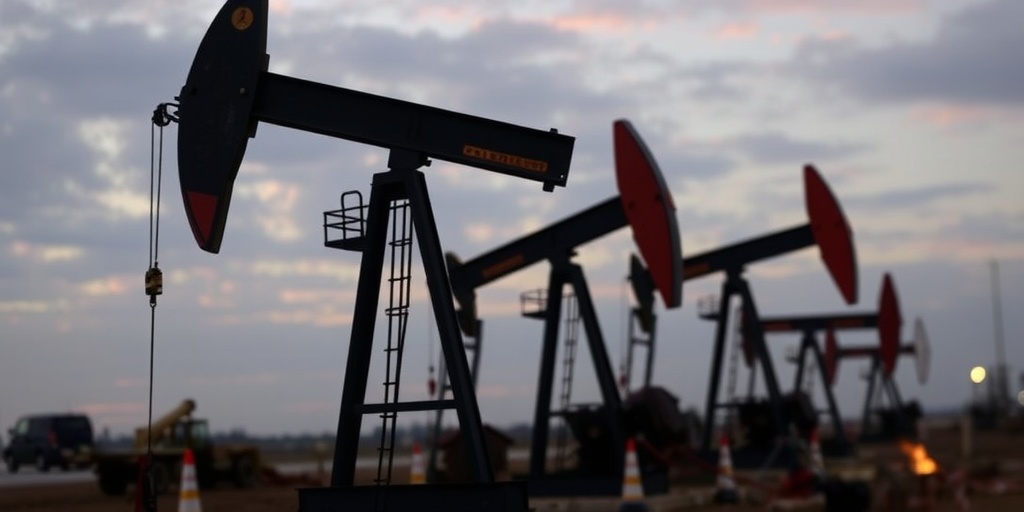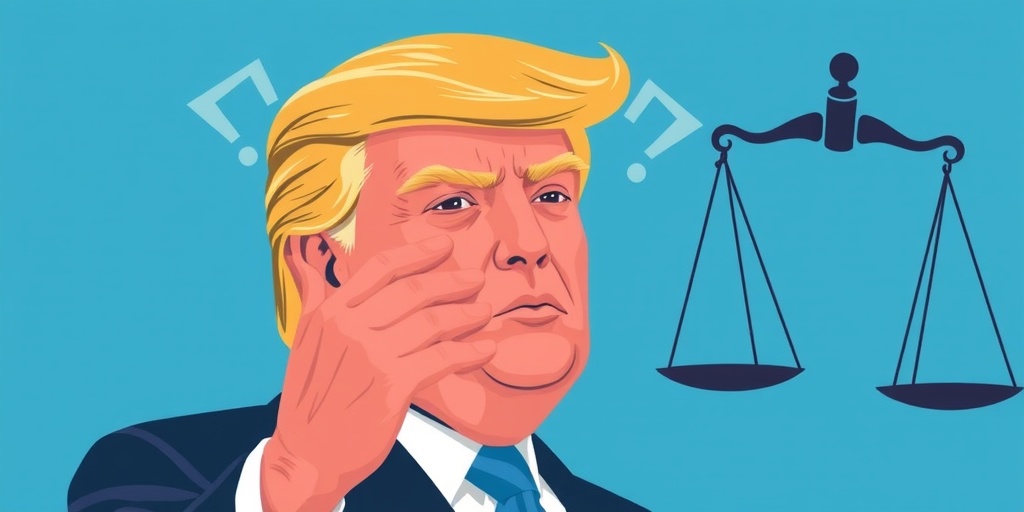Now Reading: Oil Prices Plummet, Pressuring U.S. Producers
-
01
Oil Prices Plummet, Pressuring U.S. Producers
Oil Prices Plummet, Pressuring U.S. Producers

U.S. Oil Prices Plummet Amid Tariff Escalations with China
In a notable development for the energy market, U.S. oil prices experienced a significant drop, settling around $56 per barrel on Wednesday morning. This decline comes in the wake of recent announcements from China, which declared its intentions to respond to President Trump’s tariffs with equal measures. The implications of these tariff tussles resonate deeply within the oil industry, as the decrease in crude prices paints a worrying picture of decreased confidence in the U.S. economy’s stability.
For consumers, lower oil prices can offer some relief, promising reductions at the gas station; however, the situation poses serious challenges for U.S. oil producers. Many companies in the sector are caught in a precarious position, as profit margins shrink and the financial viability of drilling new wells becomes increasingly questionable with prices hovering at such low levels. This dilemma has led many producers to adopt a wait-and-see approach, closely monitoring market conditions to determine whether prices will stabilize within the $50 to $60 range before making decisions regarding drilling or capital investments.
Historical context reveals the volatility that characterizes commodity markets like oil. Just a week prior to this latest decline, oil prices had been approximately $72 per barrel, demonstrating a stark reversal in a short time frame. The rapid fluctuation in price is largely attributed to President Trump intensifying tariffs against almost all trading partner countries, raising concerns about the long-term health of the energy sector and the broader economy.
Industry analysts are sounding alarms about the potential ramifications of a further price drop. According to data from S&P Global Commodity Insights, if oil prices tumble to around $50 per barrel, the United States could see a staggering 8 percent reduction in oil production over the course of a year. Such a decline would not only impact domestic producers but could also have ripple effects throughout the global oil market, potentially contributing to increased prices at a future date.
Peter Navarro, a trade adviser to President Trump, has been vocal about the supposed benefits of lower oil prices, arguing that $50 a barrel oil could help mitigate inflation. However, the recent downturn has left many U.S. oil executives feeling uneasy. Many of these executives had supported Trump’s election campaign, hoping he would facilitate greater access to drilling sites and ease the process of securing necessary permits for pipelines and other critical infrastructure projects. The current market conditions have, however, led to a sense of disillusionment, as executives reassess their strategies in light of the rapidly changing landscape.
Dan Pickering, the chief investment officer for Pickering Energy Partners, a firm based in Houston, expressed concern over the situation, stating, "That’s a pretty expensive trade-off." This sentiment echoes a broader apprehension among industry stakeholders about the long-term viability of investments made during a period of rising prices and the potential fallout from current tariff strategies.
The last time oil prices hovered at these depressed levels was over four years ago, indicating a prolonged period of instability that could reshape the energy landscape in the United States. As companies grapple with diminishing revenues, the prospect of scaling back production or delaying drilling plans becomes an increasingly likely scenario.
Moreover, should these low prices persist, the future of the oil sector in the U.S. could be at risk, placing further strain on an industry that has seen its fair share of challenges in recent years. The intertwined relationship between trade policies, economic confidence, and commodity prices underscores the complexity of the energy market and the vulnerability of the U.S. oil producers in this current climate.
In conclusion, while consumers may enjoy the benefits of lower oil prices at the pump for the time being, the broader implications for U.S. oil producers raise important questions about the sustainability and future of the sector. The predicament posed by President Trump’s tariffs and the potential for further declines in oil prices could trigger significant shifts in production levels, investment decisions, and ultimately, the trajectory of the U.S. energy landscape. With the stakes this high, all eyes will remain on market trends as industry leaders navigate these turbulent waters in the weeks and months ahead.
Stay Informed With the Latest & Most Important News
Previous Post
Next Post
-
 01New technology breakthrough has everyone talking right now
01New technology breakthrough has everyone talking right now -
 02Unbelievable life hack everyone needs to try today
02Unbelievable life hack everyone needs to try today -
 03Fascinating discovery found buried deep beneath the ocean
03Fascinating discovery found buried deep beneath the ocean -
 04Man invents genius device that solves everyday problems
04Man invents genius device that solves everyday problems -
 05Shocking discovery that changes what we know forever
05Shocking discovery that changes what we know forever -
 06Internet goes wild over celebrity’s unexpected fashion choice
06Internet goes wild over celebrity’s unexpected fashion choice -
 07Rare animal sighting stuns scientists and wildlife lovers
07Rare animal sighting stuns scientists and wildlife lovers





















